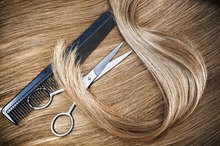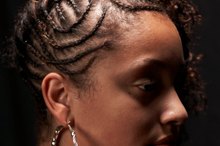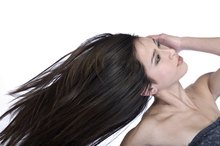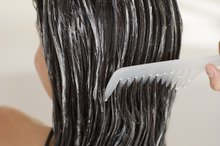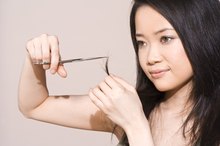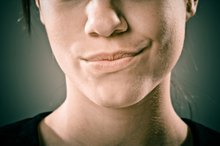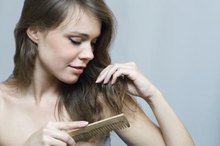How to Reverse Traction Alopecia
**Traction alopecia occurs when the hair is being pulled too hard from the follicle, which results in hair breakage and alopecia--hair loss 2.* Traction alopecia, according to Traction-alopecia.com, can be fully reversible if detected early enough; however, if it is extensive, the hair loss can be permanent 2.* This kind of hair loss is most common among groups of people who tightly tie or braid or their hair, reports the International Society of Hair Restoration Surgery (ISHRS) 1.
Discontinue wearing tight hairstyles. Hairstyles such as cornrows, extensions, sewn in hair and tight ponytails can cause traction alopecia; wearing them over a long period of time can cause irreversible traction alopecia 2.
Can I Repair Chemically Treated Hair Loss?
Learn More
Wash your hair regularly using shampoos and conditioners formulated for dry and damaged hair, which will help heal damaged hair and prevent further damage and breakage. However, do not overwash your hair, as this may promote dryness and strip your hair of its natural oils.
Do not use chemicals in your hair. Traction alopecia can also be caused by the harsh chemicals in relaxers, hair dyes and bleaches 2.** Stopping the use of these can help prevent further damage and can allow the hair to recuperate.
What Are the Treatments for Thinning Hair in Black Women?
Learn More
Use hair grafts for extensive cases of traction alopecia 123. Since there is no treatment for late-stage alopecia, the only solution for hair regrowth is to use transplanted hair grafts, which are surgically inserted into the hair follicles 3.
Warnings
Using chemicals in the hair may not only lead to traction alopecia, but may also lead to cicatricial alopecia--scarring alopecia--which is permanent. Cicatricial alopecia occurs when the scalp is damaged by scarring that prevents any new hair from growing.
Related Articles
References
- Traction-Alopecia.com: What Causes Traction Alopecia?
- Hair Loss Library: Hair Grafts
- Al-refu K. Hair loss in children: common and uncommon causes; clinical and epidemiological study in jordan. Int J Trichology. 2013;5(4):185-9. doi: 10.4103/0974-7753.130393
- Hay RJ. Tinea Capitis: Current Status. Mycopathologia. 2017;182(1-2):87-93. doi: 10.1007/s11046-016-0058-8.
- Grant JE, Chamberlain SR. Trichotillomania. Am J Psychiatry. 2016;173(9):868-74. doi: 10.1176/appi.ajp.2016.15111432
- Pratt CH, King LE, Messenger AG, Christiano AM, Sundberg JP. Alopecia areata. Nat Rev Dis Primers. 2017;3:17011. doi: 10.1038/nrdp.2017.11
- Malkud S. Telogen Effluvium: A Review. J Clin Diagn Res. 2015;9(9):WE01-3. doi: 10.7860/JCDR/2015/15219.6492
- National Alopecia Areata Foundation. Alopecia.
Writer Bio
April Khan is a medical journalist who began writing in 2005. She has contributed to publications such as "BBC Focus." In 2012, Khan received her Doctor of Public Health from the University of Medicine and Dentistry of New Jersey. She also holds an Associate of Arts from the Art Institute of Dallas and a Master of Science in international health from University College London.
